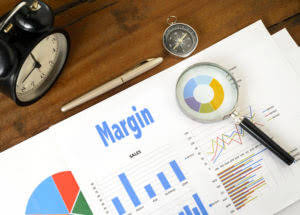
Remember, all of these assets (except land) would be subject to depreciation over their useful lives. This means every year, a portion of their value would be recorded as an expense in your income statement, reducing the value of these assets on Accounting for Churches your balance sheet. In actual practice, it is not only difficult but impractical to identify how much of the plant assets have actually been used to produce business revenue.
Types of Plant Assets
Plant assets are recorded at their cost and depreciation expense is recorded during their useful lives. Plant assets, also known as property, plant, and equipment (PP&E), are tangible assets with a useful life of more than one year. Most companies, especially those that run fully in-house and do not rely on other parties for production or processing, require unearned revenue land. Even if a company does not operate on-site or own property, many businesses profit from purchasing land, even if they do not intend to use it until later. Other methods are – Double Declining Balance Method, Insurance Policy Method, Unit Production Method, etc. It would depend upon the company accounting policies, management, and expected usage of the asset, to opt for the suitable depreciation method.
- Fixed equipment is part of the physical structure, like heating systems or fire sprinklers.
- Plant assets should be depreciated over their useful life, and reflected as an expense on the income statement.
- It’s determined by multiplying the difference between an asset’s purchase price and its projected salvage value by the number of years it’ll be in use.
- Proper recording and classification of plant assets in accounting documents their cost, useful life, and depreciation, showcasing their value in the financial statements.
- In addition, plant assets would require maintenance and sometimes substantial repairs.
Equipment

Any land maintenance, improvement, renovations, or construction to increase building operations or revenue generation capacity are also recorded as part of the plant assets. The assets can be further categorized as tangible, intangible, current, and non-current assets. It includes cash/bank, short-term securities, inventories, account receivables, etc. Assets like computers and factory machines need regular upkeep to keep them running smoothly. Without good asset management, businesses could face downtime and high maintenance costs. A plant asset is any asset that can be utilized to produce revenue for your company.
Can you give me some examples of plant assets?
- They’re pivotal players in your financial statements and can significantly influence your balance sheet health.
- The article will be all about plant assets, their recognition, depreciation, and differentiation from other asset classes.
- Even office equipment like computers or printers can qualify as plant assets, as they contribute to internal operations that support revenue generation.
- Hence, we will calculate depreciation proportionately based on the useful lives of the plant assets.
- Properly managing and accounting for plant assets ensures that financial statements are reliable, giving a realistic view of both the company’s stability and its long-term operational efficiency.
- These assets are not meant for resale and are expected to provide economic benefits for several years.
Plant assets, also plant assets known as property, plant, and equipment (PP&E), are long-term tangible assets that a company uses in its business operations to generate income. These assets are not for sale to customers but are necessary for the business to carry out its operations. Examples of plant assets include factory machinery, delivery trucks, computers, desks, and manufacturing tools. Once they own the land, they might make it better with landscaping, parking lots, and sidewalks.
- Some fixed assets’ fair values can be extremely variable, needing revaluations as often as once a year.
- Current assets are expected to be used within a year or short-term time frame.
- Plant assets, also known as fixed assets, are tangible assets that are used in the production process or to generate revenue for a company over an extended period of time.
- This helps both sides—the giver gets a tax write-off and the receiver gains valuable tools without cost.
- The later years are charged a lower sum of depreciation based on the assumption that lower revenue is generated.
Knowing how to end a business note or email is an important skill to develop. It helps portray a sense of confidence, respect and tone to your message.. Let’s take another look at The Home Depot, Inc. balance sheet as of February 2, 2020. Shaun Conrad is a Certified Public Accountant and CPA exam expert with a passion for teaching. After almost a decade of experience in public accounting, he created MyAccountingCourse.com to help people learn accounting & finance, pass the CPA exam, and start their career.
![]()
What plant assets are depreciated?

Unique from regular office supplies or inventory for sale, plant assets are capital investments meant to serve the company for many years. Did you know plant assets are more than just heavy equipment or sprawling facilities? They’re pivotal players in your financial statements and can significantly influence your balance sheet health. Improvements refer to significant enhancements made to existing assets, either to extend their useful life or increase their functionality. Examples include adding extra storage to a warehouse, upgrading lighting systems, or installing additional security features. Improvements are often considered separate assets because they represent a new investment beyond the original purchase.
Impairment of Plant Assets

No—different businesses have different kinds of plant assets depending on what products or services they offer. For example, straight-line depreciation divides an asset’s initial cost by its expected lifespan. Once these items are used in production or other operations, they’re treated as plant assets on the books. Keeping track of these assets helps businesses run smoothly and prevents loss or theft.